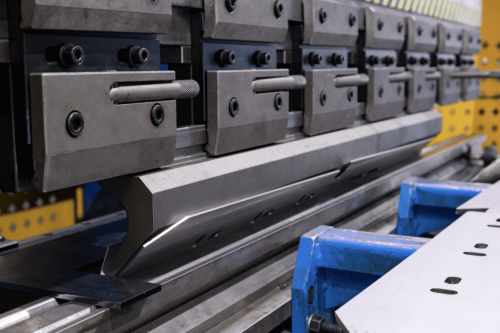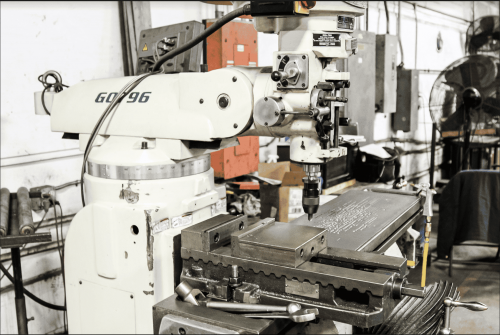
Sheet Metal Fabrication Techniques
March 1, 2022
Manufacturing Process: Machining vs. Fabrication
May 1, 2022Key Points
Follow how metal fabrication has evolved from the Stone Age to the Modern Age
Metal fabrication has been around for centuries and represents one of the oldest elemental skills known to man. From the transportation industry to jewelry making to building materials, metalworking has become an important aspect of society in so many regards. Let’s take a look at metal fabrication over time.
The Stone Age
Hunters and gatherers of the Stone Age used monoliths and small stones to develop blades and tools circa 10,000-4,500 BCE. In 9,000 BCE, copper became the first metal discovered by humans who later developed the metal into tools. Other native materials such as gold and silver followed and were used to make works of art, currency, jewelry, and tools.
The Bronze Age
It wasn’t until the Bronze Age (circa 2,300-700 BCE) that metal pots and pans and the chariot were invented. This historical era is also noted for innovations in writing and the design of the first wheel. Bronze was the first known hard metal and the oldest alloy to be crafted into swords and armor.
The Iron Age
While humans continued to manufacture and manipulate the use of bronze, the Iron Age emerged circa 1,500 BCE, which used smelting processes to transform iron into weapons, armor, and infrastructure. According to EandT.org, “The period gets its name from the widespread employment of ferrous metallurgy and the early evolution of carbon steels for tools and weaponry, iron’s emergence as the pre-eminent engineering material of the era was not ushered in by any significant innovations in materials processing.” This is when the real age of metal fabrication began.
The Steel Age
More than 1.6 billion tons of steel are produced globally each year. Steel is one of the most abundant man-made materials on the planet today. As an alloy, it is made up almost exclusively of iron with its secondary component of carbon which is added to increase iron’s strength and hardness
Although steel has been known to civilizations globally for thousands of years, it wasn’t until the arrival of the Bessemer process in the mid-19th century that it could be mass-produced in industrial quantities.
The Aluminum Age
Despite the difficulties in extracting aluminum, it is the second most used metal, with global production in 2016 at 58.8 million tons.
Large-scale industrial production arrived in the late 19th century when the Hall-Héroult process crafted the art of aluminum smelting. The Austrian chemist Carl Joseph Bayer discovered a method of purifying bauxite (aluminum’s most common ore) to yield alumina in 1889. The Bayer and Hall-Héroult processes remain the basis of aluminum production to this day.
The Modern Age
Leonardo Da Vinci envisioned the first rolling mill used later to standardize and roll gold sheets into currency (coins). Rolling mills developed in the 1600s supported standardization and production which became the hallmark of the Industrial Revolution.
Metals today are still used, though on a larger scale, what they were initially used for: tools and building materials. The industrial fabrication of metal has undoubtedly changed the course of human history as we know it and we will continue to evolve our relationship with various metals.
Today, reports say there are more than half a million metal fabrication companies in the US generating billions in revenue annually and employing millions of workers that strengthen our economy.


